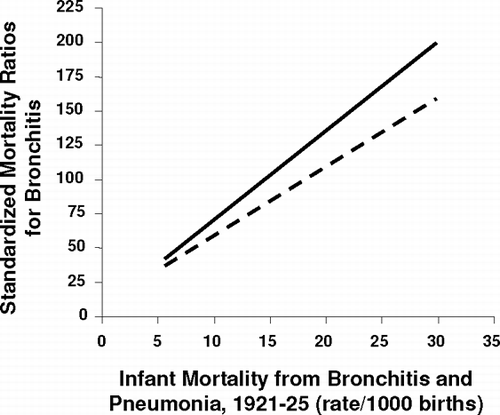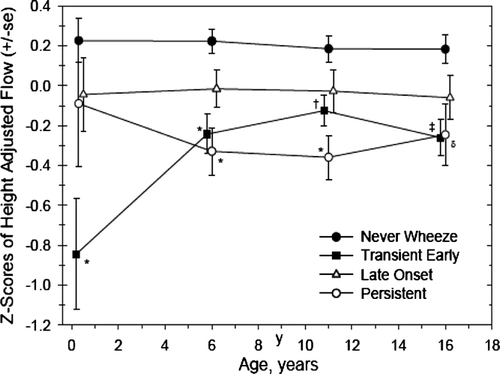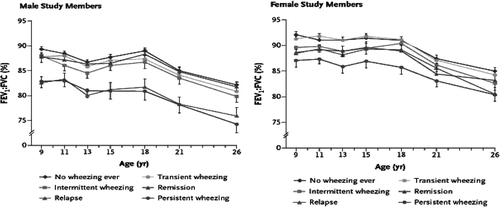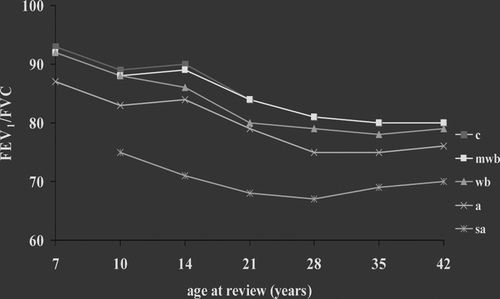Figures & data
Figure 1 Relationship between early death from infant respiratory disease and subsequent standardized mortality rate for chronic bronchitis and emphysema. Solid line gives data for men. Dashed line gives data for women. A high infant mortality rate over a range of communities is associated with a high subsequent mortality in the same area from chronic obstructive airway disease. Adapted from Barker DP. Fetal and infant origins of adult disease. BMJ Books 1992; 343:52–53.

Figure 2 Tracking of lung function; data from the Tucson cohort. The transient early wheezers are born with low lung function, which has improved, albeit not to normal, by age 6; thereafter, there is no catch-up growth. The persistent wheezers are normal at birth, have airflow obstruction by age 6, and thereafter lung function tracks. The late onset wheezers do not show any decrement of lung function. Reproduced with permission from Am J Respir Crit Care Med. 2005; 172: 1253–8

Table 1 Wheezing phenotypes in the Tucson study
Figure 3 Tracking of lung function, independent of wheeze phenotype, between age 9 and 26 years, in males and females. Reproduced with permission from N Engl J Med. 2003; 349: 1414–22

Figure 4 Data from the Melbourne cohort. Tracking of lung function from childhood into middle-age, irrespective of wheeze phenotype. C, control; mwb, mild wheezy bronchitis (wheezy bronchitis would today probably be called virus associated wheeze); wb, wheezy bronchitis; a, asthma; sa, severe asthma. Adapted from Pediatr Pulmonol 1997; 23; 14–20
